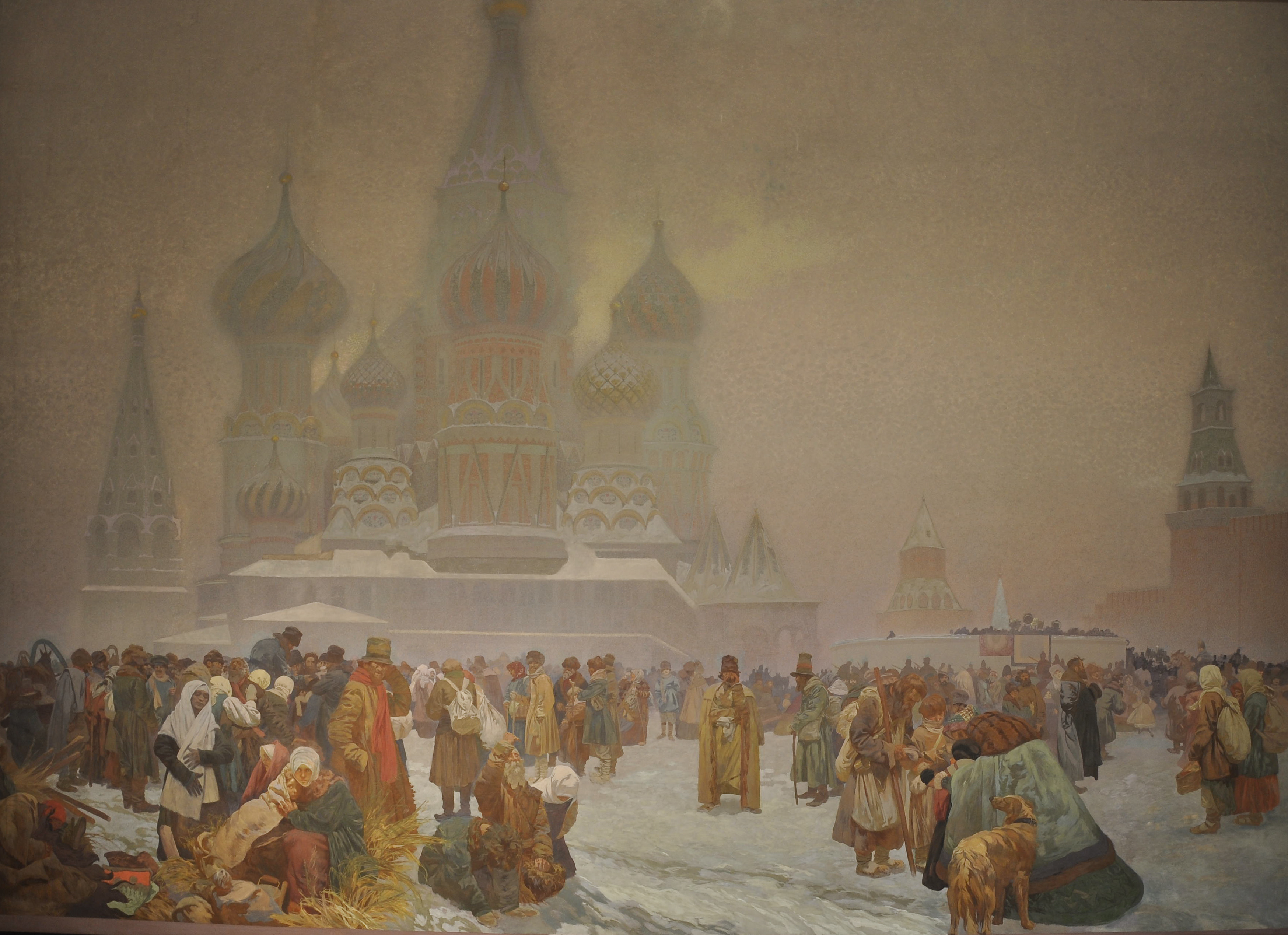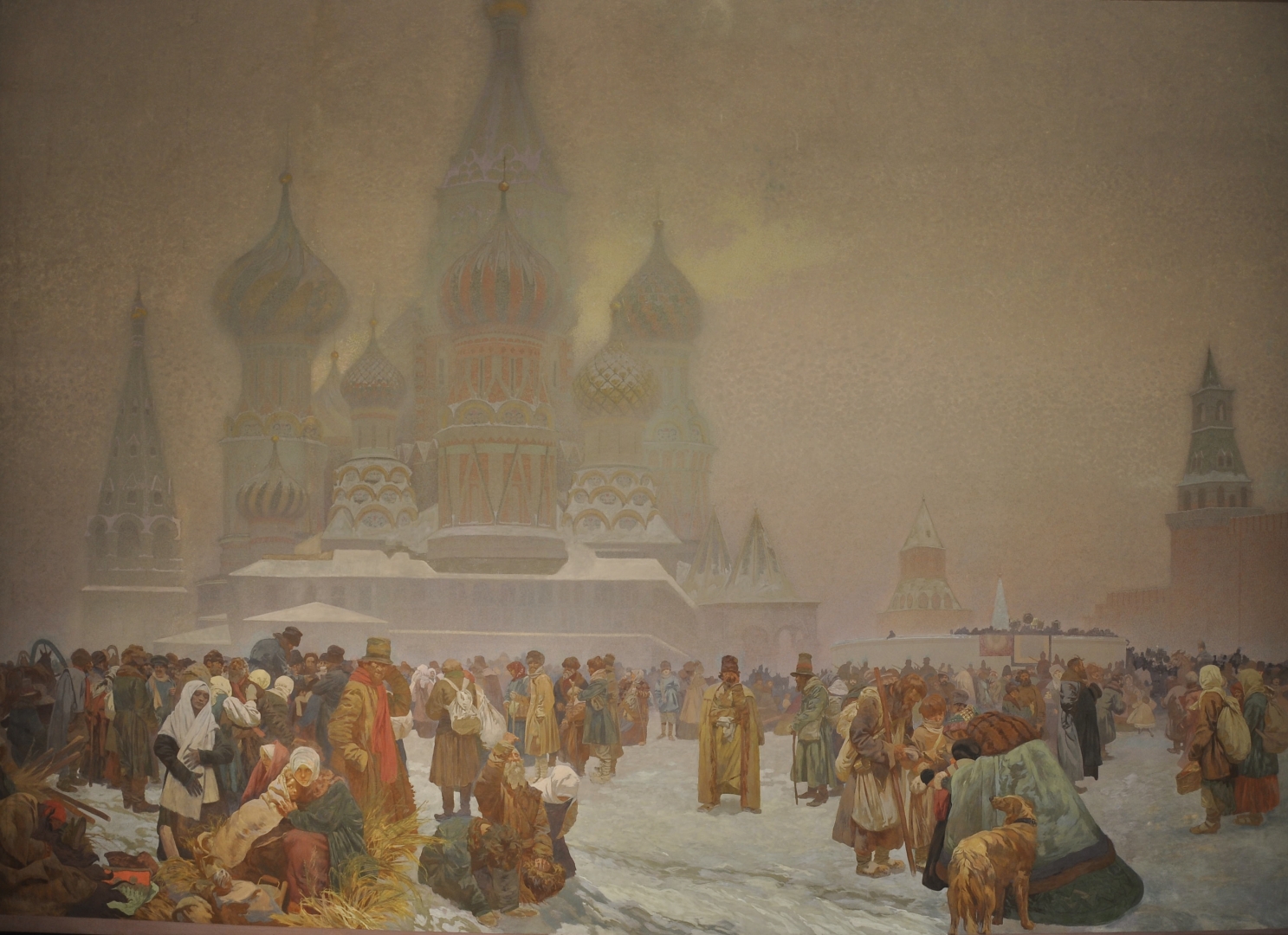THE ABOLITION OF SERFDOM IN RUSSIA
Russian Empire had fallen behind, politically and economically, and only caught up to the countries in Western Europe in the 19th century. The defeat in the Crimean War (1853-1856) and several peasant uprisings forced the government to implement changes. The Emancipation reform laid the foundation for the country's industrial development. Keeping 47 million people in serfdom was no longer sustainable. No further progress would be possible without free workers.
On February 19, 1861, in the sixth year of Tsar Alexander II's reign, a tsarist Manifesto was passed, proclaiming the abolishment of serfdom.
The painting depicts a cold March morning on Red Square in Moscow in front of St. Basil's Cathedral. The Kremlin towers loom in the background. To the right of the temple - built in the 16th century by the first Russian Tsar Ivan the Terrible, is a round tribune from which the Tsar's order abolishing slavery was announced on March 5, 1861. Officials leave it after the announcement. The village and town people remain in the square, and it is clear from the facial expression that everyone deals with their new freedom in their way. Some rejoice at the new possibilities; others are unsure what to expect.
Above the towers of the Church of Vasily the Blessed, the first rays of the sun, symbolising dawn and freedom, gradually penetrate the thick fog. Alfons Mucha painted this painting in 1914–1915, after returning from his study trip to Russia in 1913. He changed his original intention - to paint the Abolition of Serfdom in Russia as a glorious historical event because he recognised the oppression of ordinary Russian people and their actual standard of living.

